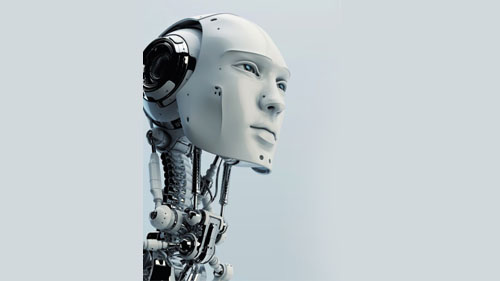
Source: Unsplash
The emergence and growth of technology have made it possible to maximize production in workplaces to outputs far beyond what anyone would have imagined. The automation of processes and machinery has made the work easier for both the production team and the overall administration. The human workload has been cut to nearly half, and the accrued production costs are minimized.
More than half of the industries have either automated their processes or integrated robots as part of their production processes in the current decade. You may be wondering if integrating a robot in your workplace will positively or negatively impact your organizational work environment and the employees. Well, this article will help you make a definitive choice. Read On!
Table of Contents
What are Robots?
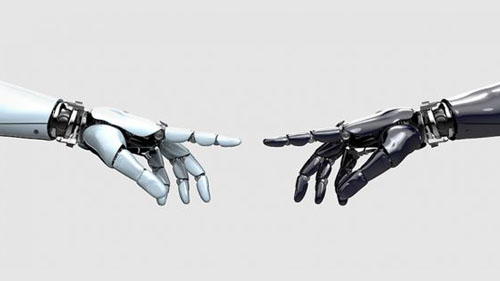
Source: Pinterest
A robot is a machine that is programmable by computers. Essentially, they are assembled and built into a desired shape and size and then given instruction through a set of codes written by engineers to help the robot navigate through its intended tasks. Robots are not designed to replace human labour. Rather, they are developed to reduce the workload on human employees as well as to speed up the output time.
Types of Robots
Pre-programmed robots
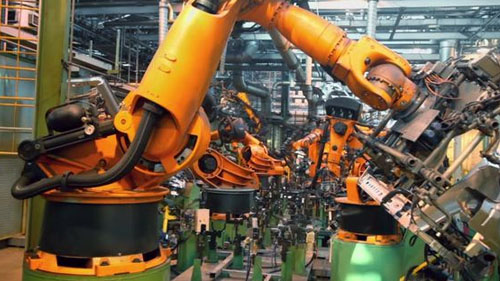
Source: Pinterest
Pre-programmed robots carry out simple, repetitive activities in a controlled setting. A mechanical arm in an automobile assembly line is one example of a pre-programmed robot. The arm has only one duty – weld a door shut, put a part into the engine, etc. — and it must do it better, quicker, and longer than a person could.
Autonomous Robots
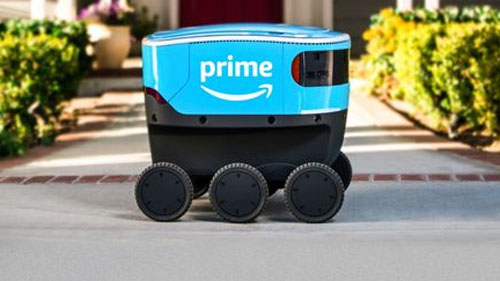
Source: Pinterest
Human operators are not required for autonomous robots to function. These robots are often built to do jobs in open spaces without the need for human supervision. They’re one-of-a-kind in that they utilize sensors to detect the environment around them, then utilize decision-making mechanisms (typically a computer) to choose the best next action based on their data and purpose.
Humanoid robots
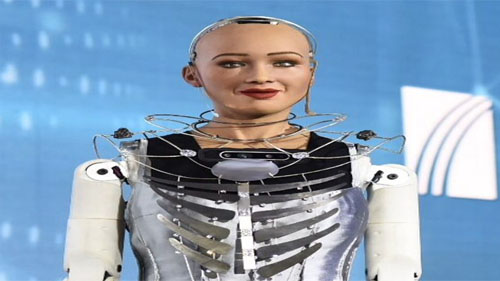
Source: Pinterest
Humanoid robots have the appearance and behaviour of humans. These robots often do human-like tasks (such as running, leaping, and carrying goods) and are occasionally made to resemble humans with human-like features and attitudes—for instance, Hanson Robotics’ Sophia.
Teleoperated robots
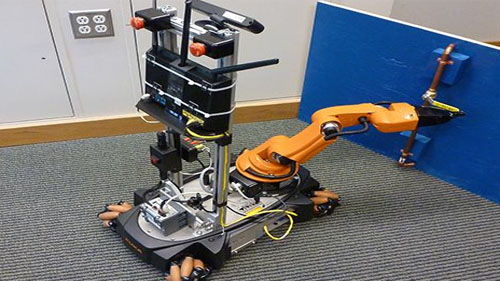
Source: Pinterest
Teleoperated robots are semi-autonomous robots that may be controlled remotely over a wireless network. These robots are typically used in remote locations with harsh weather, climate, and other factors. Examples of these robots include-Human-controlled submarines employed to repair undersea pipe breaks during the BP oil spill and drones employed to locate landmines on battlegrounds.
Augmenting robots
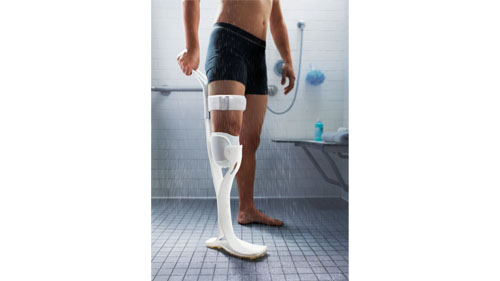
Source: Pinterest
Augmenting robots can either improve present human skills or replace those that have been lost. The robotics domain for human enhancement is one in which sci-fi might become actual soon, with robots capable of redefining humanity by making people quicker and more robust. The modern augmenting robots examples include Robotic prosthetic limbs and exoskeletons used to lift heavy weights.
Should robots replace humans in the workplace?
The whole essence of having robots in the workplace is not to send human beings parking but rather to lessen their workload and increase their efficiency. To better answer this, we will look at the different industries that have integrated robots in the workplace and how they have merged a corporation between the robots and their employees.
Health care Industry
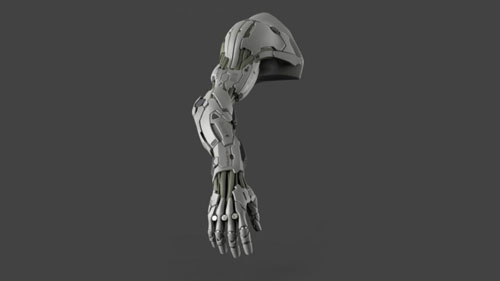
Source: Pinterest
Robotics advancements have the potential to transform a wide range of healthcare procedures, including surgery, especially a robotic arm for humans, recuperation, therapy, patient camaraderie, and daily tasks. Robotic tools in health care aren’t meant to take over a doctor’s job; rather, they’re meant to make it simpler for them to do it.
Exoskeletons, for example, can support and guide patients who have had strokes, spinal cord injuries or are paralyzed during rehabilitation. Furthermore, robotic lifting equipment can assist nurses in lifting old or immobile patients. With sensors, microphones, and cameras, robotic systems such as the robotic arm for humans can help doctors and surgeons while performing operations on patients.
The robotic arms for humans are designed with efficiency in mind to ensure that they deliver the best services to the clients. That is why EVS is trusted to offer the best in the industry. Having built robotic arms for humans for ages, their final product is suited to meet every person’s needs.
Agriculture
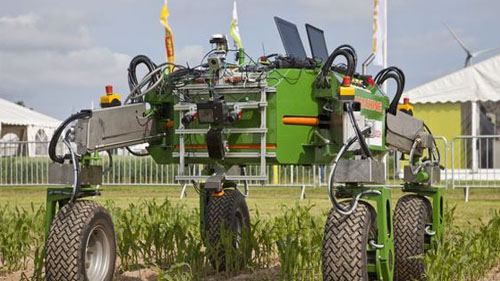
Source: Pinterest
The agriculture business has been aggressively seeking to integrate various sorts of robotic technology to aid enhanced production while cutting overall expenses. Farmers have been utilizing GPS-guided tractors and harvesters for some time.
The practical usage of autonomous systems to automate processes, including pruning, thin, mowing, spray, and weed eradication, has recently increased. Sensor technology is also being used to help farmers manage pests and illnesses that impact their crops.
Manufacturing
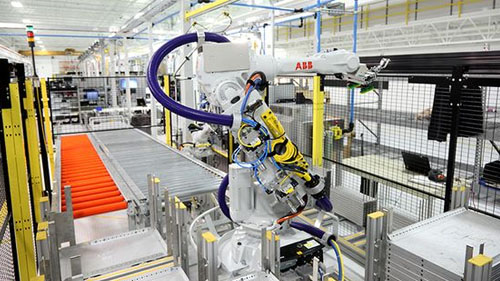
Source: Pinterest
Many industries of production are using robotics to assist enhance quality and performance while cutting production costs. Many robots in manufacturing cooperate with employees to execute monotonous, tedious, or sophisticated jobs under the employee’s supervision and direction, similar to the healthcare business.
Precision and the capacity to be reprogrammed for specific jobs of various sizes and intricacies are prized more than the speed with these machines. The use of robotic manufacturing technologies is also growing safer. Some dangerous manufacturing tasks such as welding can be carried out by robots. Heavy industrials like motorcycles, boilers, heavy machinery, railway locomotives have already started using robots for robotic aluminum welding. Robots can detect and avoid humans in the workplace thanks to cameras, sensors, and automated shutdown capabilities.
Military and Public Safety

Source: Pinterest
Robots are being used in a variety of ways in the military and public safety sectors. Unmanned drones are one extremely apparent sector. During the war, these robots can be utilized for observation and support missions.
Military drones may assess threat levels and deliver accurate info in real-time to soldiers. First, response teams in places of violence and war, hostage situations, and natural and man-made disasters. Drones are transforming disaster response because they can go to dangerous regions faster and more precisely without putting human rescuers in danger.
Food processing and Preparations
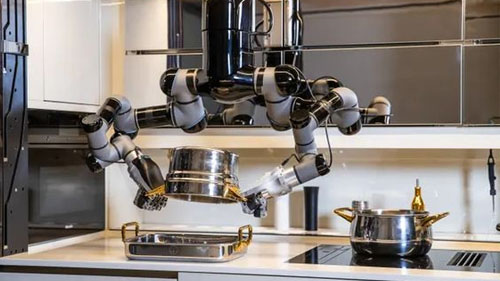
Source: Pinterest
Soon, one of the more lavish advances in robot technology will be available in the kitchen. In a home kitchen, automated and intelligent robots, such as those developed by industrial experts, will be able to carry out tons of kitchen operations.
A smartphone will control these robots. After the controller selects a recipe and organizes pre-packaged containers containing chopped and prepared goods, the robot will be able to swiftly and effectively produce the set meal.
What does this mean?
Overall, no matter how self-sufficient robots will be made to be, there always will be a need for humans. So, in my opinion, robots should not replace human beings at the workplace. As seen in the different industries, there is a mutual ground that they both can work together. Simply ensure you work with the right team.
Pros of Robots in the Workplace

Source: Unsplash
Cost is, without question, one of the most significant advantages for organizations when it comes to employing robotics in the workplace. The expenditures stop after the item is purchased and maintained. There are no wages to be paid, no holidays, no overtime, and so on. Robots may theoretically work 24 hours a day, seven days a week.
Robots will outperform humans in terms of accuracy. Sweat can’t get in their eyes; things fall off their fingers or make them fatigued. Tiny robots are currently being used to do some procedures because they are ideally suited for miniature, repetitious, and complex jobs.
Robots can be utilized in a variety of situations where humans might feel intolerable. They can labour for an extended duration of time and in harsh heat or cold without complaining. Robots in the workplace simply interpret that firms may hire labourers, which are the perfect working prospect, only that it’s a machine.
Disadvantages of robots in the workplace
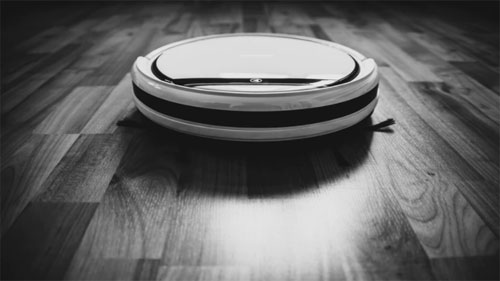
Source: Unsplash
As stated in the opening, the biggest fear is that robots would take over so much human labour that many people would be unemployed. Robots may eliminate more than half of all occupations in the next couple of years, but it’s uncertain whether this is something we should be concerned about. The nature of human employment will very certainly alter, just as it did throughout the industrial revolution.
The crux of the issue is how innate and newfangled AI will be. While robots are far superior at pre-programmed activities, humans are still preferred in unexpected situations, implying that robots will not take over some occupations. Even when commercial firms use chatbots, a person would still be preferred over a computer.
Installing robots in the workplace still necessitates physical labour. There will undoubtedly be a cost associated with training those people on how to work with robots.
Are Robots Better than Humans?
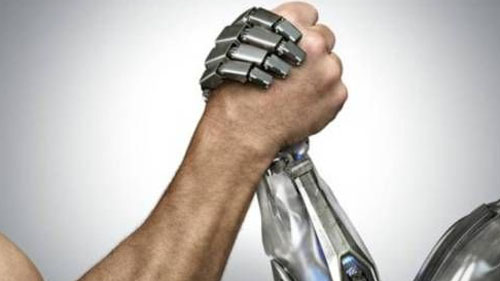
Source: Pinterest
Undoubtedly, robots are quite smart. Artificial intelligence has made it possible for machines to learn and think like humans and even more advanced. Robots are designed to meet different work aspects. This means that a robot can perform tasks designed for a number of people, with or without supervision.
As much as humans will think differently in some situations, there is no denying that machines, robots, in particular, are better than humans.
The Bottom Line
Robots have and will continue to grow in both essence and productivity. If you choose to be part of the drive that takes the production and workplace performance to the next level, reach out to a professional team.
Automation in the workplace will always come with its challenges. Just ensure to get the guidance necessary to do it with the least resistance from workers possible.
